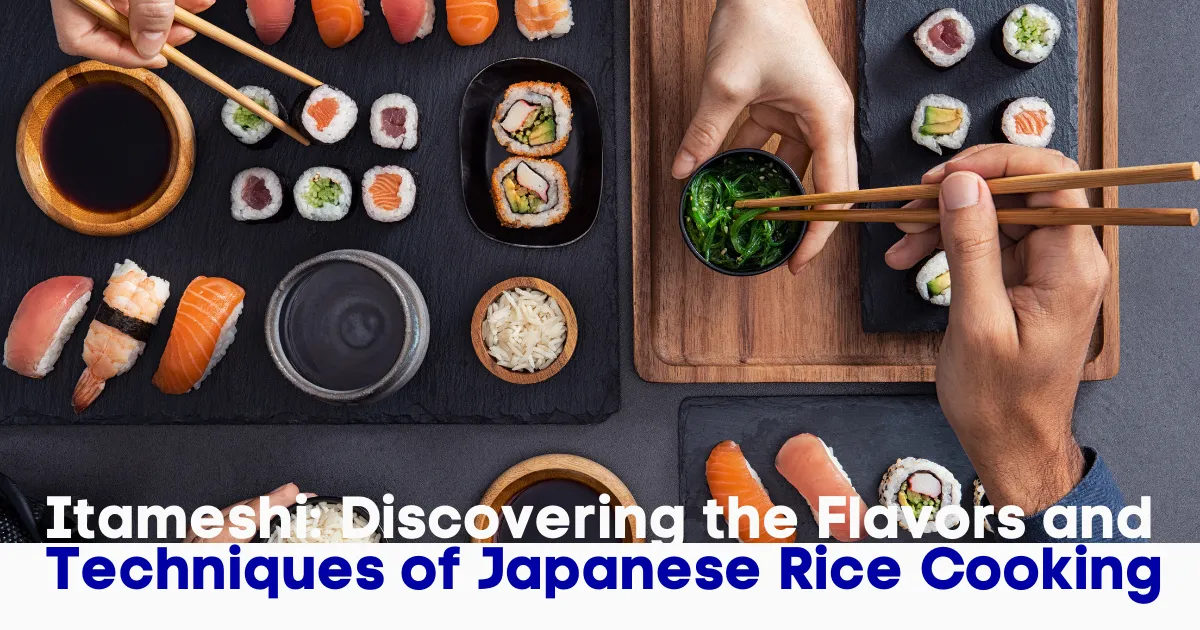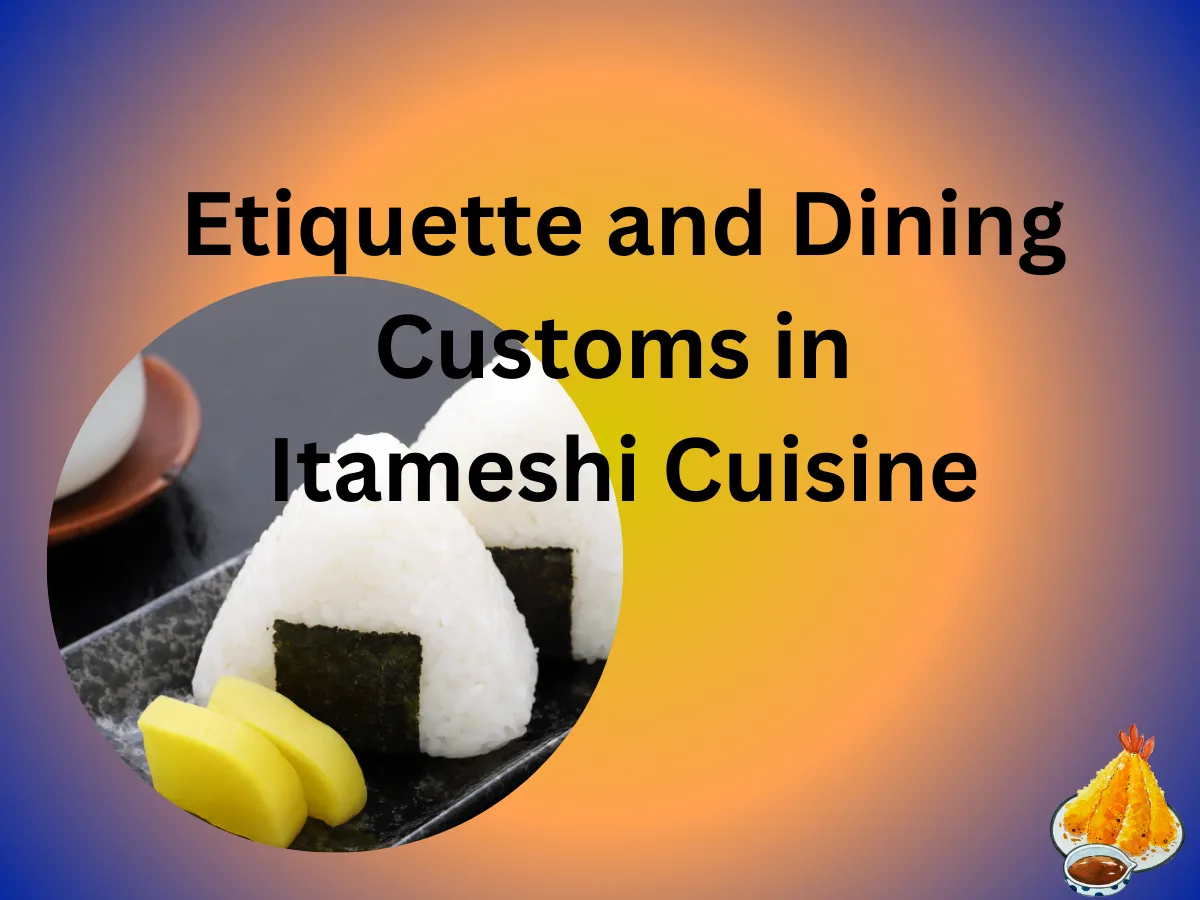Last updated on October 10th, 2025 at 02:28 pm
Japanese rice dishes – Itameshi, a delightful facet of Japanese cuisine, holds a special place in the hearts of food enthusiasts. Derived from the words “itadakimasu” (a phrase said before eating) and “meshi” (rice), Itameshi represents the essence of Japanese culinary culture. It’s not just about nourishment; it’s a celebration of flavors, textures, and tradition.
Japanese Rice Dishes – Key Ingredients:
Itameshi cuisine relies on a handful of core ingredients that form the foundation of countless dishes. Rice, particularly short-grain Japonica rice, is the centerpiece of nearly every Itameshi meal. This high-starch rice variety provides the perfect balance of stickiness and fluffiness, making it ideal for sushi and other rice-based dishes.
Seafood plays a prominent role, given Japan’s extensive coastline. Fresh catches like tuna, salmon, and eel are often transformed into sashimi or sushi. Additionally, vegetables like seaweed (nori), daikon radish, and shiitake mushrooms are used as accompaniments and as components in dishes such as miso soup and tempura.
Itameshi seasoning is another crucial aspect, with soy sauce, miso paste, sake, and mirin being typical flavor enhancers. Achieving the right balance of these seasonings is integral to creating the signature umami taste for which Japanese cuisine is renowned.
- Rice: At the heart of Itameshi lies Japanese rice, short-grained and sticky, perfect for sushi and other dishes.
- Seafood: Fresh fish and seafood are staples in sushi, sashimi, and tempura.
- Vegetables: Crisp and colorful vegetables like seaweed, radishes, and bamboo shoots complement the dishes.
- Seasonings: Soy sauce, miso, mirin, and sake add depth and umami to Itameshi creations.

Exploring The Flavors Of Itameshi Cuisine And Japanese Rice Dishes – Health Benefits:
One of the standout features of Itameshi is its inherent focus on health. Fresh and seasonal ingredients, minimal use of processed foods, and mindful portion sizes contribute to the health-conscious nature of this cuisine. The use of lean proteins, like fish, combined with an abundance of vegetables and seaweed, ensures that Itameshi dishes are nutrient-rich.
Furthermore, the traditional cooking techniques employed in Itameshi, such as steaming, grilling, and stir-frying, help retain the nutritional value of the ingredients. Itameshi also incorporates fermented foods like miso and pickles, which are known for their probiotic benefits.
The practice of mindful eating, savoring each bite, and enjoying a variety of flavors in a single meal encourages a more balanced and satisfying dining experience. This approach aligns well with modern dietary principles that emphasize the importance of portion control, mindful eating, and a diverse, nutrient-dense diet.
Traditional Japanese Rice Dishes And Sushi – Popular Itameshi Dishes:
Itameshi boasts a diverse array of beloved dishes, each with its unique characteristics. Sushi, the globally celebrated combination of vinegared rice and fresh seafood, is a shining example of Itameshi’s artistry. Sashimi, thinly sliced raw fish or seafood, showcases the purity of flavors and skilled knife work.
With its numerous regional variations, Ramen is a comforting noodle soup that captivates taste buds. Tempura features deep-fried, lightly battered ingredients like shrimp and vegetables, offering a delightful contrast of textures. Teriyaki, yakitori, and sukiyaki are other flavorful examples that highlight the versatility of Itameshi.
Japanese Rice Dishes: A Culinary Journey
Rice is a staple food in Japanese cuisine, and it’s often paired with various dishes to create delicious and satisfying meals. Here are some popular Japanese rice dishes:
Classic Rice Dishes
- Ochazuke: A simple yet comforting dish where rice is poured over with green tea or dashi broth.
- Okonomiyaki: A savory pancake made with flour, eggs, and shredded cabbage, often topped with various ingredients like meat, seafood, and vegetables.
- Takoyaki: Bite-sized balls of batter filled with diced octopus, cooked in a special pan, and topped with various sauces, mayonnaise, and seaweed flakes.
- Donburi: A rice bowl topped with various ingredients, such as grilled eel (unagi don), grilled meat (katsudon), or raw fish (kaisen don).
Japanese Culinary Culture – A Grain of Wonder: The Beautiful Simplicity of Japanese Rice Dishes:
Itameshi is renowned for its delicate and precise cooking techniques. Grilling, or “yakimono,” imparts a smoky flavor to fish and meat, often seasoned with soy-based sauces. Steaming, or “mushimono,” is favored for retaining the natural flavors and nutrients of vegetables, tofu, and seafood.
Stir-frying, known as “itamemono,” is executed at high heat and rapid pace, ensuring ingredients are cooked evenly while maintaining their crispness. Deep-frying, in the case of tempura, yields a crispy exterior and tender interior, showcasing a mastery of oil temperature control.
These techniques require skill, patience, and an acute understanding of ingredient characteristics, reflecting the craftsmanship embedded in Itameshi cuisine.
The Cultural Significance Of Itameshi
Regional Variations Each region in Japan boasts its own Itameshi specialties. For instance, Hokkaido is famous for its seafood, while Kyoto offers refined kaiseki cuisine. The regional diversity showcases Japan’s rich culinary heritage.
Cultural Influences Itameshi reflects Japan’s historical connections with other cultures, like China. Buddhist vegetarian practices and seasonal traditions also shape the cuisine, making it more than just a meal but a cultural journey.
Etiquette and Dining Customs Partaking in Itameshi comes with customs like using chopsticks with finesse, slurping noodles as a sign of enjoyment, and embracing the concept of omotenashi—where guests are treated with heartfelt hospitality.
Health Benefits The use of fresh, seasonal ingredients, balanced flavors, and mindful portion sizes make Itameshi not only delicious but also nutritious. It promotes overall well-being.
Itameshi in Popular Culture From the pages of literature to the screens of cinema, Itameshi often plays a starring role. Films like “Jiro Dreams of Sushi” and novels like “Kitchen” celebrate the culinary artistry that is Itameshi, leaving a lasting impression on Japanese culture.
So, whether you’re savoring a piece of sushi, enjoying a steaming bowl of ramen, or exploring the intricacies of Itameshi, you’re embarking on a flavorful journey that goes beyond food—it’s a cultural experience to cherish.
Enchanted Grains: The Magic & Spirit of Japanese Rice Dishes
Dining in Japan, especially when enjoying Itameshi cuisine, is a cultural experience filled with traditions and customs that enhance the meal. Here are some key etiquette and dining customs to observe:
Chopstick Etiquette: When using chopsticks (hashi), avoid pointing them at others, passing food directly from chopstick to chopstick, or sticking them upright in a rice bowl. Instead, place them across your bowl or on a designated rest when not used.
Slurping Noodles: It’s perfectly acceptable to slurp your noodles, especially in the case of ramen. Slurping shows appreciation and indicates that you’re enjoying the meal.
Soy Sauce Usage: When dipping sushi or sashimi into soy sauce, dip the fish side (neta) rather than the rice side (shari). Oversoaking the rice can cause it to fall apart. Use soy sauce sparingly to avoid overwhelming the delicate flavors.
Wasabi Placement: If wasabi isn’t already included in your sushi or sashimi, adding a small amount directly to the dish or mixing it with soy sauce is customary. Refrain from placing a large glob of wasabi directly on the fish.
Order and Sharing: In a group setting, it’s common to order various dishes and share them family-style. Be mindful of portion sizes to ensure everyone gets a taste of each dish.
Omotenashi (Hospitality): Itameshi dining establishments take pride in their omotenashi, a deep-seated commitment to hospitality. You’ll often find attentive service, warm greetings, and a focus on welcoming and valuing diners.
Silent Enjoyment: While conversation is encouraged, there are moments of silent appreciation during the meal. These moments allow diners to savor the flavors and textures of the dishes.
Express Gratitude: At the end of your meal, it’s customary to express your gratitude with the phrase “Gochisosama deshita,” which roughly translates to “Thank you for the meal.” This shows appreciation to the chefs and staff for their efforts.
Tipping: Unlike in some Western countries, tipping is uncommon in Japan. Exceptional service is expected as a standard, and tipping can sometimes be rude.
Footwear Etiquette: In traditional Japanese restaurants or homes, removing your shoes is customary before entering. Slippers may be provided for indoor use.
Pouring Drinks: When dining with others, it’s polite to pour drinks for your companions and allow them to reciprocate. If someone offers to pour your drink, hold your glass slightly to make it easier for them.
Wait for Everyone: It’s customary to wait until everyone has received their dishes before the meal begins. Likewise, finish your meal at a pace similar to the group’s.
By embracing these customs, you’ll enjoy your Itameshi meal to the fullest and show respect for Japan’s rich culinary traditions and culture.






